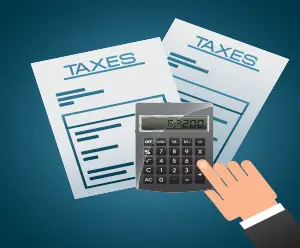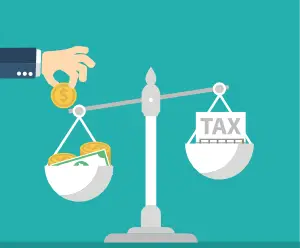
Understanding the IRS Substitute for Return
Click to ask Mike Ask Mike The Internal Revenue Service (IRS) Substitute for Return (SFR) is a term many taxpayers

IRS wage garnishment is a powerful tool utilized by the Internal Revenue Service (IRS) to collect unpaid taxes from individuals who have not responded to prior attempts at resolving their tax liabilities. This article delves into the intricacies of IRS wage garnishment, offering a detailed examination of the process, legal framework, notification procedures, employer involvement, percentage calculations, avenues for release, appeals, and practical strategies for preventing this serious measure. Understanding these facets is crucial for taxpayers to navigate the complexities of IRS wage garnishment and address their tax obligations effectively.
Initiation of IRS Wage Garnishment
IRS wage garnishment is not the IRS’s first course of action. It typically follows unsuccessful attempts to communicate with the taxpayer regarding their overdue taxes. The process starts when a taxpayer has consistently ignored or neglected prior notices, warnings, and opportunities to settle their tax debt through negotiations or installment plans.
Legal Framework
The legal authority for IRS wage garnishment is rooted in the Internal Revenue Code (IRC), specifically in Section 6331. This section empowers the IRS to levy and seize property, including wages, to satisfy a taxpayer’s outstanding tax debt. The legal framework ensures that the IRS follows specific procedures and adheres to due process when implementing wage garnishment.
Notification Process
The IRS is required to follow a systematic notification process before resorting to wage garnishment. The taxpayer receives a series of notices, starting with a demand for payment, followed by a notice of intent to levy, and finally, a notice of the right to a hearing. These notices are crucial opportunities for the taxpayer to address the issue and explore alternative solutions.
Employer Involvement
Once the decision to proceed with wage garnishment is made, the IRS informs the taxpayer’s employer. The employer then becomes legally obligated to withhold a specific percentage of the employee’s wages and remit that amount to the IRS until the tax debt is fully satisfied or another arrangement is agreed upon. Employers must comply with these directives to avoid legal repercussions.
Percentage of Wage Garnished
The calculation of the amount to be garnished involves a formula set by the IRS. This formula considers the taxpayer’s filing status, the number of dependents, and allowable deductible expenses. Understanding this calculation is essential for taxpayers, as it provides insight into how the IRS determines the financial impact of wage garnishment on an individual’s income.
Financial Hardship and Release of Wage Garnishment
In situations of extreme financial hardship, taxpayers have the option to request a release of wage garnishment. This involves presenting evidence to the IRS that the garnishment places an undue economic burden on the taxpayer. While the release is not guaranteed, it offers a potential avenue for relief in cases of genuine financial distress.
Appeals and Resolutions
Taxpayers retain the right to appeal an IRS decision to garnish wages. Initiating an appeal triggers a review process, during which the taxpayer can present their case and potentially reach a more favorable resolution. Additionally, exploring alternative resolutions such as installment agreements, offers in compromise, or seeking Currently Not Collectible (CNC) status can provide viable alternatives to wage garnishment.
Preventing IRS Wage Garnishment
Proactive measures are the most effective way to avoid IRS wage garnishment. Timely communication with the IRS, responding to notices, setting up reasonable payment plans, and staying informed about available options can help prevent the need for such drastic measures. Seeking professional advice from tax professionals or utilizing online tools provided by the IRS can aid in developing a comprehensive strategy for addressing tax obligations.
Consequences of IRS Wage Garnishment
Understanding the consequences of IRS wage garnishment is paramount for individuals facing this scenario. Beyond the immediate financial impact, wage garnishment can adversely affect creditworthiness and overall financial stability. It may lead to strained relationships with employers and impact the ability to meet basic living expenses. Recognizing these consequences underscores the urgency of addressing tax issues before they escalate to the point of wage garnishment.
Conclusion:
In conclusion, IRS wage garnishment is a formidable mechanism used by the IRS to collect unpaid taxes when other avenues have been exhausted. This comprehensive exploration has shed light on the initiation, legal framework, notification procedures, employer involvement, percentage calculations, avenues for release, appeals, and preventive strategies associated with IRS wage garnishment. Armed with this knowledge, taxpayers can take proactive steps to address their tax obligations, navigate the complexities of the IRS system, and potentially avoid the serious consequences of wage garnishment. It emphasizes the importance of timely communication, understanding one’s rights, and exploring available alternatives to foster a more constructive resolution to tax challenges.
You can now ask our AI assistant any questions you have about your tax debt or any tax-related issues. Whether you’re unsure about payment plans, need clarification on penalties, or want information on how to resolve your tax situation. Our AI is ready to assist you with all your tax-related concerns.

By interacting with our AI assistance, you agree to our terms & conditions. Enjoy our AI Tax Assistant responsibly.
Ask me any questions...
Related Posts

Click to ask Mike Ask Mike The Internal Revenue Service (IRS) Substitute for Return (SFR) is a term many taxpayers

Click to ask Mike Ask Mike The Internal Revenue Service (IRS) Substitute for Return (SFR) is a term many taxpayers

Click to ask Mike Ask Mike The Internal Revenue Service typically operates within a 10-year window, commencing from the

Click to ask Mike Ask Mike The Internal Revenue Service (IRS) operates within specific timeframes dictated by statutes of limitations

Click to ask Mike Ask Mike understanding the ins and outs of the 10-year statute of limitations (SOL) is essential.
Recent Posts

Click to ask Mike Ask Mike The Internal Revenue Service (IRS) Substitute for Return (SFR) is a term many taxpayers

Click to ask Mike Ask Mike The Internal Revenue Service (IRS) Substitute for Return (SFR) is a term many taxpayers

Click to ask Mike Ask Mike The Internal Revenue Service typically operates within a 10-year window, commencing from the

Click to ask Mike Ask Mike The Internal Revenue Service (IRS) operates within specific timeframes dictated by statutes of limitations

Click to ask Mike Ask Mike understanding the ins and outs of the 10-year statute of limitations (SOL) is essential.
Disclaimer: This is educational content, not legal, accounting, or tax advice.
This is a tax debt resource website, not to be used in lieu of a tax attorney or for legal advice. All information, Ai chat responses, articles, materials, and content are intended to inform users on a variety of tax topics. In no way is it intended to be construed as accounting, legal, tax, other services or advice. This site is not intended to be used to avoid tax penalties or tax debt that may be imposed by law. Terms and Conditions. Your use of this site constitutes acceptance of the following terms and conditions.
This is a tax debt resource website, not to be used in lieu of a tax attorney or for legal advice. All information, Ai chat responses, articles, materials, and content are intended to inform users on a variety of tax topics. In no way is it intended to be construed as accounting, legal, tax, other services or advice. This site is not intended to be used to avoid tax penalties or tax debt that may be imposed by law. Terms and Conditions. Your use of this site constitutes acceptance of the following terms and conditions.
© 2023 · Tax Debt Monster, Inc. All rights reserved

For all Tax Professionals that would like to partner up with us. By partnering with us, you’ll help us connect and make a positive impact in the tax community. Partner up with us and receive a complimentary Ai Tax Sidekick to help support your clients at no cost! Click here if you’re interested in our Partner-Up program

By interacting with our AI assistance, you agree to our terms & conditions. Enjoy our AI Tax Assistant responsibly.
How may I help you with your tax issue?